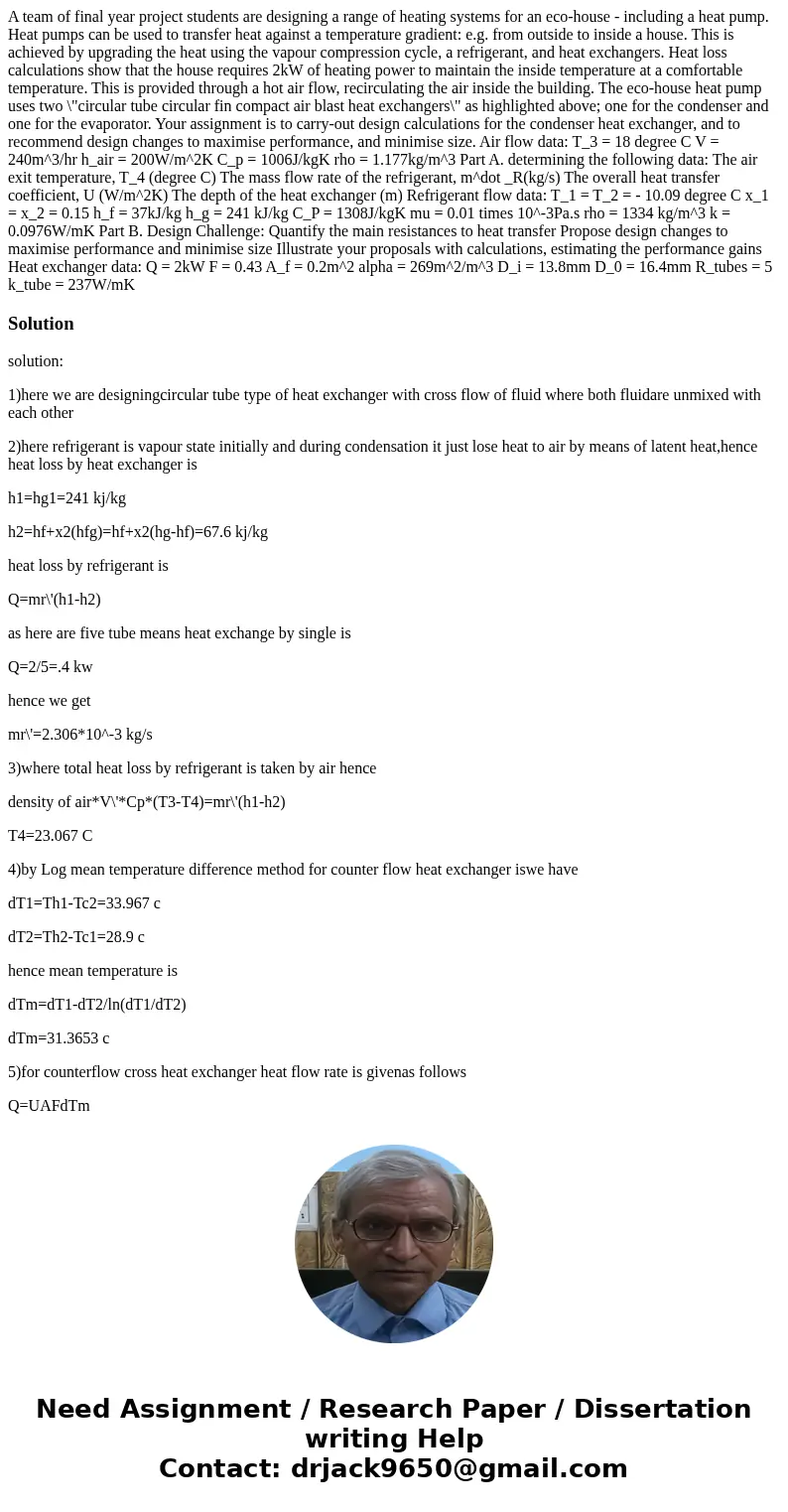A team of final year project students are designing a range
Solution
solution:
1)here we are designingcircular tube type of heat exchanger with cross flow of fluid where both fluidare unmixed with each other
2)here refrigerant is vapour state initially and during condensation it just lose heat to air by means of latent heat,hence heat loss by heat exchanger is
h1=hg1=241 kj/kg
h2=hf+x2(hfg)=hf+x2(hg-hf)=67.6 kj/kg
heat loss by refrigerant is
Q=mr\'(h1-h2)
as here are five tube means heat exchange by single is
Q=2/5=.4 kw
hence we get
mr\'=2.306*10^-3 kg/s
3)where total heat loss by refrigerant is taken by air hence
density of air*V\'*Cp*(T3-T4)=mr\'(h1-h2)
T4=23.067 C
4)by Log mean temperature difference method for counter flow heat exchanger iswe have
dT1=Th1-Tc2=33.967 c
dT2=Th2-Tc1=28.9 c
hence mean temperature is
dTm=dT1-dT2/ln(dT1/dT2)
dTm=31.3653 c
5)for counterflow cross heat exchanger heat flow rate is givenas follows
Q=UAFdTm
hence we get UA=.02965
6)heat overall transfer coefficient at outer surface of tube is given by
Uo=(1/(Ro/Ri*hi)+(Roln(Ro/Ri)/k)+(1/ho))
here we dont hi,hence we have to find it by flow properties as follows
mass flow rate=density*V\'
V\'=1.7280*10^-6 m3/s
by continuity we get V\'=A*v
v=.01155 m/s
reynold number=Re=v*Di/kinematic viscosity=21262.62
prandtl number=mu*Cp/k=.1338
hence nusselt number
Nu=.023*Re^.8*Pr^.3
Nu=36.45
Nu=hi*Di/k
hi=257.8337 w/m2c
hence on putting value in outer surface overall heat transfer coefficient we get
Uo=104.01
where UA=UoAo=.02965
Ao=2.85*10^-4 m2
Ao=pi*Do*L
L=5.5326*10^-3 m
6)Ao/v=269
Volme=1.0596*10^-6 m3
depth is=volume/Af=5.29*10^-6 m
7)resistance to convection at inner and outer surface are
R1=1/hiAi=16.69
R3=1/hoAo=17.54
by tube thickness,R2=(Ro-Ri)/kA=.02095
hence here more dominating resistane is resistance to convection at outer surface
7)one way to improve performance is to increase mass flow rate of refrigerant or change suitable refrigerant to enhance hi,change air to suitable fluid to enhance ho,as welll tube of conductive nature should be used


 Homework Sourse
Homework Sourse